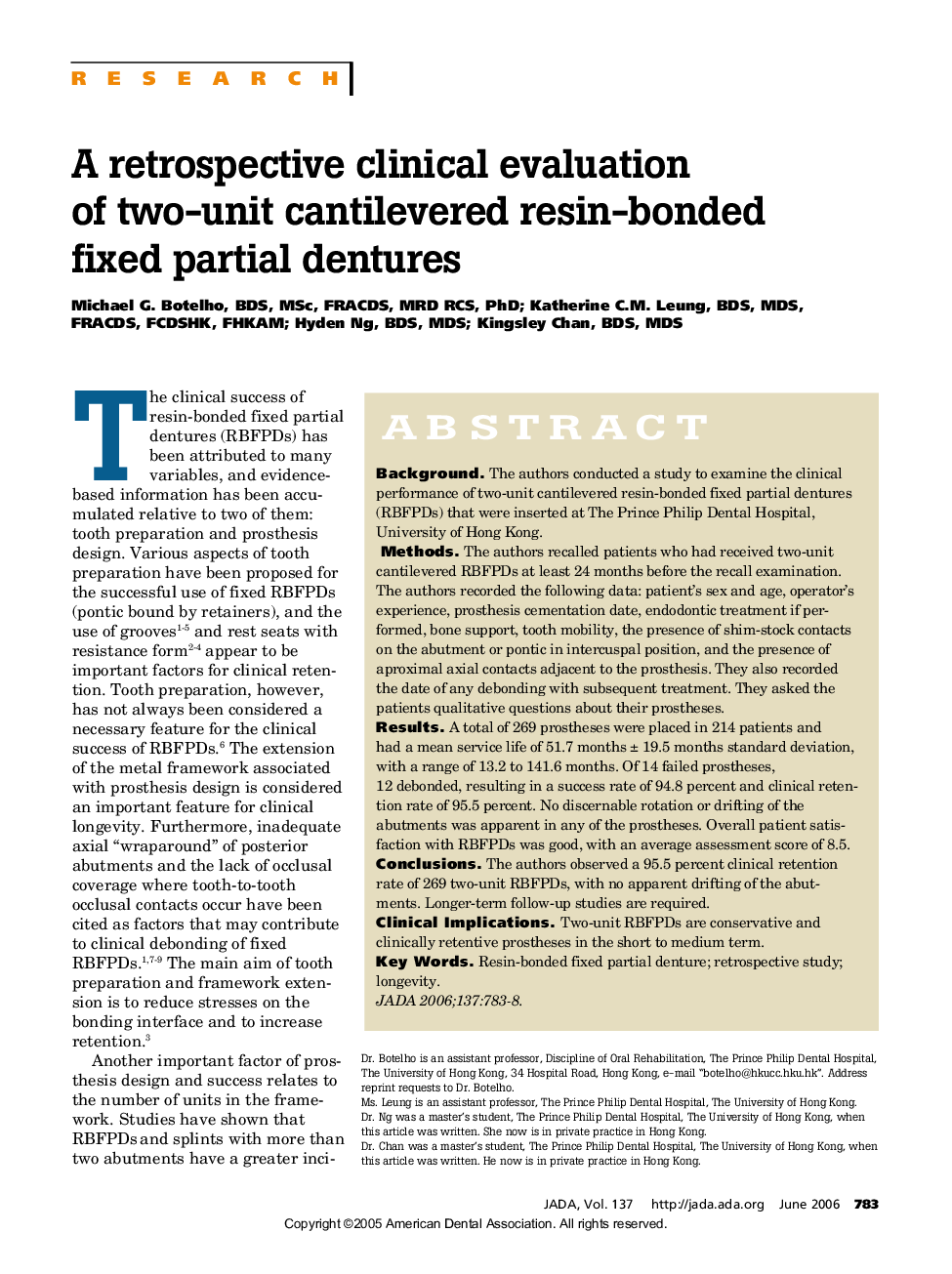| Article ID | Journal | Published Year | Pages | File Type |
|---|---|---|---|---|
| 3140264 | The Journal of the American Dental Association | 2006 | 6 Pages |
ABSTRACTBackgroundThe authors conducted a study to examine the clinical performance of two-unit cantilevered resin-bonded fixed partial dentures (RBFPDs) that were inserted at The Prince Philip Dental Hospital, University of Hong Kong.MethodsThe authors recalled patients who had received two-unit cantilevered RBFPDs at least 24 months before the recall examination. The authors recorded the following data: patient's sex and age, operator's experience, prosthesis cementation date, endodontic treatment if performed, bone support, tooth mobility, the presence of shim-stock contacts on the abutment or pontic in intercuspal position, and the presence of aproximal axial contacts adjacent to the prosthesis. They also recorded the date of any debonding with subsequent treatment. They asked the patients qualitative questions about their prostheses.ResultsA total of 269 prostheses were placed in 214 patients and had a mean service life of 51.7 months ± 19.5 months standard deviation, with a range of 13.2 to 141.6 months. Of 14 failed prostheses, 12 debonded, resulting in a success rate of 94.8 percent and clinical retention rate of 95.5 percent. No discernable rotation or drifting of the abutments was apparent in any of the prostheses. Overall patient satisfaction with RBFPDs was good, with an average assessment score of 8.5.ConclusionsThe authors observed a 95.5 percent clinical retention rate of 269 two-unit RBFPDs, with no apparent drifting of the abutments. Longer-term follow-up studies are required.Clinical ImplicationsTwo-unit RBFPDs are conservative and clinically retentive prostheses in the short to medium term.
